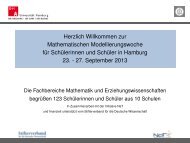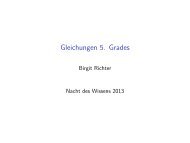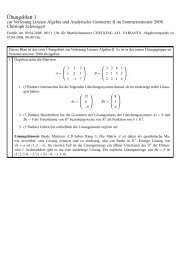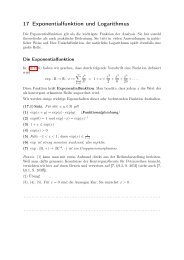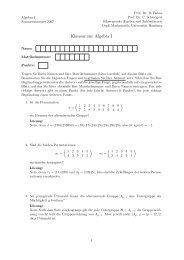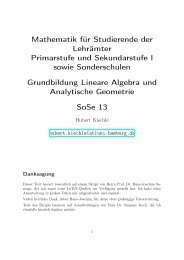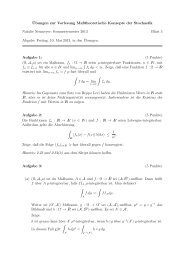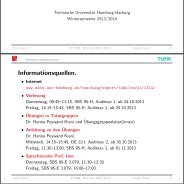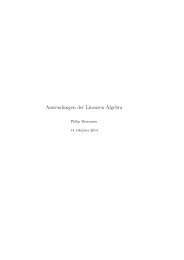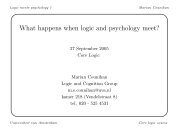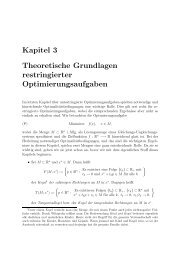pdf file
pdf file
pdf file
Create successful ePaper yourself
Turn your PDF publications into a flip-book with our unique Google optimized e-Paper software.
while for the right hand side, we find by an analogous computation<br />
(id ⊗ Δ F )Δ F (a) = (id ⊗ Δ F )(F Δ(a)F −1 )<br />
= (id ⊗ Δ F )(F ) ∙ F 23 ∙ (id ⊗ Δ)Δ(a) ∙ F −1<br />
23 ∙ (id ⊗ Δ F )(F −1 )<br />
A sufficient condition for coassociativity to hold is the identity<br />
(Δ F ⊗ id)(F ) ∙ F 12 = (id ⊗ Δ F )(F ) ∙ F 23<br />
which, by taking inverses in the algebra H ⊗3 , implies<br />
and which is equivalent to<br />
F −1<br />
12 (Δ ⊗ id)(F −1 ) = F −1<br />
23 (id ⊗ Δ F )(F −1 )<br />
F 12 (Δ ⊗ id H )(F ) = F 23 (id H ⊗ Δ)(F ) .<br />
2. We leave the rest of the proofs to the reader.<br />
✷<br />
Definition 4.5.17<br />
Let H be a Hopf algebra with invertible antipode. An invertible element F ∈ H ⊗ H satisfying<br />
F 12 (Δ ⊗ id)(F ) = F 23 (id ⊗ Δ)(F )<br />
(id ⊗ ɛ)(F ) = (ɛ ⊗ id)(F ) = 1<br />
is called a 2-cocycle for H or a gauge transformation. We denote the twisted Hopf algebra with<br />
coproduct Δ F , counit ɛ and antipode S F by H F .<br />
Examples 4.5.18.<br />
1. Let H be a finite-dimensional Hopf algebra with basis {e i } and dual basis {e i }. Consider<br />
˜H := H ∗ ⊗ H opp<br />
and in ˜H ⊗ ˜H the basis-independent element<br />
˜F =<br />
dim<br />
∑H<br />
i=1<br />
(1 H ∗ ⊗ e i ) ⊗ (e i ⊗ 1 H )<br />
A direct calculation shows that this element is a 2-cocycle for ˜H.<br />
2. Let (H, R) be a finite-dimensional quasi-triangular Hopf algebra. Then<br />
F R := 1 ⊗ R 2 ⊗ R 1 ⊗ 1<br />
is a 2-cocycle for H ⊗ H with the tensor product Hopf algebra structure. For a proof, we<br />
refer to [S, Theorem 4.3].<br />
The proof of the following theorem can be found in [S, Theorem 4.3]:<br />
113




